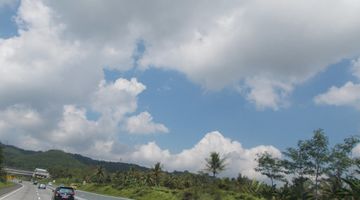Prambanan – Best Tips on Visiting the Temple
Charming Prambanan Temple is actually something of a misnomer as this is actually a collection of temples known as candi which are located close to the city of Yogyakarta in Central Java.
Temple Facts
Prambanan is a Hindu temple complex which is thought to date from around 850 AD and is also designated as a UNESCO World Heritage Site. The complex would have been built by Rakai Pikatan and then added to by other kings such as King Lokapala and Balitung Maha Sambu. It was built as a monument to Lord Shiva and was actually known as the House of Shiva in ancient times. Like neighboring Borobudur, a Buddhist temple, it was abandoned for years before being rediscovered and renovated.
Like Borobudur, Prambanan was discovered by British surveyor Thomas Stamford Raffles, although at the time the British colonialists did not do much work on the temple to restore it to its former glory as with Borobudur. That means that much of the temple complex was looted and sadly many of the inner statues are missing. The temple was also quite badly damaged in an earthquake in 2006 although it has since been restored and is considered stable.
The temple is also famous for its legend which is called the Legend of the Slender Virgin. The story goes that King Boko was defeated in a battle by Prince Bandung and had to agree for his daughter, Loro Jonggrang, to be married to the prince. He agreed that the prince could wed his daughter only if he could build a temple of 1,000 statues before the sun came up, so Prince Bandung enlisted spirits to help him built 999 statues. The princess however, who did not want to be married, started a fire so that it looked as if dawn had broken on the horizon and the Prince lost the bet. When he found out however he was furious and turned the princess into a statue herself which would have been one of the most famous statues in Prambanan.
Prambanan Temple Entrance Fees and Opening Hours
Prambanan is a temple complex with a number of different buildings which are located inside a main park. The complex opens every day from 6 am to 6 pm and tickets cost USD 4 for Indonesian visitors.
Tickets for foreign guests are IDR 252,000 or IDR 126,000 for students who have proof of student status.
You can also buy a combination ticket if you want to visit neighboring Borobudur Temple at the same time which is IDR 520,000 and is valid for two days.
Note that you will need to wear a sarong to visit the temple which is provided as part of the ticket price and you will also be provided with water, tea and coffee. You can also hire a guide to show you around which should cost around USD 8 depending on your haggling skills. If you want to know more about the detailed history of the complex, then this is certainly worth the money although it is not mandatory that you hire a guide.
What to see in Prambanan
As Prambanan is a temple complex there are a number of different areas that you can visit as part of a trip here. Back in the day there would have been some 240 temples here but now many of them have fallen into disrepair or disappeared completely.
Nowadays the temple complex is separated into three main zones.
The outer zone is just an area of park land which would have been fenced by an outer wall. The middle zone would have had a range of 224 shines and some of these have been restored now and are known as Candi Perwara which means Guardian Temples.
The main highlight of Prambanan is the inner zone which has eight temples and eight smaller shrines which all sit on an elevated inner platform. These temples are dedicated to a number of different gods. Some of the famous temples in this area Candi Lara, which is also known as Candi Prambanan, and this is the most important temple in the park. The temples here are covered with ornately carved bas reliefs. These include Candi Siva which, as the name suggests, was built in honor of Shiva the Destroyer and is the largest of the six temples that still stand. The main reason to come here is to take in the bas reliefs that tell the story of the Ramayana. The other temples here include Candi Brahma which is dedicated to Brahma the creator and has more bas reliefs about the Hindu epic, the Ramayana.
Also located in the inner zone is Candi Vishnu which is dedicated to Vishnu the Preserver.
As well as the temples in the complex you can also check out the Prambanan Museum which has a number of buildings that are linked by pathways and which explain about the history of Prambanan including its restoration process.
There is also a Prambanan Audio Visual center which shows a film called ‘Cosmic Harmony’ which tells you all about the original Prambanan temple site and how it would have looked in the days of old. The film lasts for around 30 minutes and it is free as part of the man temple entrance fee.
Attractions around Prambanan
As well as all the temples in the main Prambanan complex there are also a number of other interesting temples dotted outside the park on the Prambanan Plain. As such, if you have time then it is worth checking some of these out when you visit.
One such temple around two kilometers away from the complex is Candi Plaosan which is a Buddhist temple which you can walk to from Prambanan. The temple is a mix of Hindu and Buddhist motifs as it was built by a famous Hindu king who was married to a Buddhist.
Also worth visiting is Kraton Ratu Boko which is a palace that stands on the top of a hill and looks out over the Prambanan Plain, so makes a good place for a photo opportunity. There is an entry fee of USD 10 to visit the site but you can also get a free shuttle over here from Prambanan.
Of all the temples on the Prambanan Plain, the oldest Buddhist temple of its kind is Candi Kalasan which was built as a memorial for a female bodhisattva named Tara and you can also take in some carvings of bodhisattvas here.
Finally, if you have time and want to make the most of your visit, then head to the open-air theater which is located on the pretty Opak River and which has dancer recitals which feature the Ramayana, a Hindu epic which is performed between May and October every year and also has a gamelan orchestra accompaniment. You will need to book a ticket to see a show with a travel agent before you visit. During the rainy season you can also check out the show in a neighboring local theater although it is best to come in the dry season and enjoy it under the stars.
Tips on your visit
The Prambanan Complex opens at 6 am and it is best to get here as early as possible if you want to beat the crowds. Unlike neighboring Borobudur however, people don’t usually come here for the sunrise which is less impressive as the temple is not elevated in the way that Borobudur is.
A good tip if you want to see both however is to visit Borobudur first and then make your way to Prambanan after that as the sunrise at the former is definitely worth getting up early for.
That said, it can get very hot walking around in the daytime so try to arrive before 9 am if possible, especially if you are not planning to visit Borobudur at the same time.
Also make sure to bring plenty of sunscreen and water with you, even though drinks are available for purchase on site. When you enter the temple you will be given a sarong to wear but it is also best to dress modestly in loose, long sleeved clothes.
As the rainy season in this part of Indonesia lasts from November to March so you are best visiting from April to October if possible.
How to get there
It is easiest to get to Prambanan from neighboring Yogyakarta which is around 17 kilometers away.
You can fly into Yogyakarta from a number of domestic hubs in Indonesia like Jakarta, Surabaya and Denpasar, or you can fly internationally from Kuala Lumpur and Singapore.
From Yogyakarta you can take the TransJogja bus which will take you directly from Jalan Malioboro in Yogyakarta to Prambanan for a fee of IDR 3,600. The journey takes around half an hour and buses leave from 6 am and depart every twenty minutes or so. This is by far the cheapest way to get to Prambanan but it can also be more time consuming than hiring a car or a taxi, as the bus stops along the way and there can be a lot of traffic, particularly in the afternoon.
You can also take a taxi from Yogyakarta directly to Prambanan which costs around IDR 60,000 and this can be a good choice if you are travelling as a family or as part of a group.
Finally, it is also possible to take the train to Prambanan and then walk to the temple but this is a time consuming and rather uncomfortable option considering you can take a bus or taxi far more easily.
Where to stay
There are some hotels scattered around Prambanan Complex and you may want to think about staying overnight here if you want to beat the crowds and visit the park in the early morning. If not however then you can easily stay in a hotel in Yogyakarta or Solo and just visit for the day.
Most of the hotels around the complex are simple Indonesian style hotels and you can get a room in many for around IDR 200,000 per night. There are however some more upscale choices such as Poeri Devata Resort Hotel which has a swimming pool and has rooms from USD 80 per night if you want something a little more lavish.
Where to eat
You won’t find a huge amount of variety around Prambanan but there are a number of local cafes here known as warungs. These sell typical Indonesian dishes like fried noodles and fried rice and you can expect to pay around IDR 10,000 per dish making these a cheap and cheerful option. There are also a number of larger restaurants including Prambanan Garden Resto which has an Indonesian buffet for IDR 75,000. As you walk around the complex you will also find a range of hawkers selling drinks which is a welcome sight in the afternoon heat.


























































